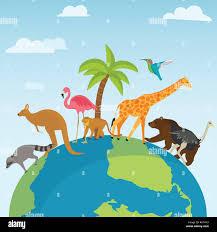The Fascinating World of Animals
The animal kingdom is one of the most diverse and extraordinary aspects of life on Earth. Spanning millions of species, animals inhabit nearly every corner of the planet, from the deepest oceans to the highest mountains. Their uniqueness, adaptability, and role in ecosystems make them a subject of endless fascination.
Diversity in the Animal Kingdom
Animals come in all shapes and sizes, ranging from the microscopic tardigrade to the massive blue whale, the largest animal ever known to exist. They are classified into various groups, including mammals, birds, reptiles, amphibians, fish, and invertebrates like insects and mollusks. Each group exhibits unique characteristics and behaviors that allow them to survive and thrive in their environments.
For instance, birds have evolved feathers and hollow bones for flight, while mammals possess fur and nurse their young. Amphibians like frogs bridge the gap between aquatic and terrestrial life, while insects, the most numerous group, play crucial roles in pollination and decomposition.
Adaptations for Survival
One of the most remarkable features of animals is their ability to adapt to their surroundings. Camels, for example, have evolved to survive in arid deserts with minimal water, while penguins are perfectly equipped to thrive in freezing Antarctic conditions. Chameleons change their color to blend into their environment, and cheetahs, the fastest land animals, rely on speed to catch prey.
These adaptations not only showcase the ingenuity of evolution but also underline the importance of biodiversity in maintaining the balance of nature.
The Role of Animals in Ecosystems
Animals are integral to ecosystems, fulfilling roles such as pollinators, predators, and prey. Bees, butterflies, and birds help plants reproduce by transferring pollen. Apex predators like lions and sharks maintain the balance of animal populations, preventing overpopulation and resource depletion.
Even scavengers like vultures play a vital role by cleaning up carcasses, reducing the spread of disease. This interconnectedness highlights the delicate balance that sustains life on Earth.
Human-Animal Relationship
Throughout history, humans have shared a deep connection with animals. From domesticating dogs and cats to relying on livestock for food and labor, animals have been companions, helpers, and sources of inspiration. They feature prominently in art, literature, and mythology across cultures.
However, human activities such as deforestation, poaching, and climate change pose significant threats to wildlife. Many species, like tigers and rhinos, are endangered, while others have already gone extinct due to habitat loss and overexploitation.
Conservation Efforts
Recognizing the importance of protecting animals, conservation efforts have gained momentum globally. Organizations and governments are working to preserve habitats, combat illegal wildlife trade, and promote sustainable practices. Wildlife sanctuaries, national parks, and breeding programs are some initiatives that help protect endangered species and maintain biodiversity.
Conclusion
Animals are not just a part of nature; they are vital to its survival. Their beauty, diversity, and ecological roles remind us of the intricate web of life on Earth. By understanding and respecting animals, humans can ensure a harmonious coexistence that benefits all species, including ourselves.
The animal kingdom is a treasure trove of wonder, and it is our responsibility to protect and cherish it for generations to come.

